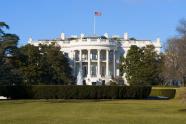Assessing Obama and Romney Energy Economics

When it comes to re-generating the economy, who
has the better plan? Is it President Obama, who is
using government’s levers to increase consumer
demand and consumer confidence? Or, is it
GOP-hopeful Mitt Romney, who would reduce taxes
across the board?
Both candidates, in fact, say that they support a
simpler tax system whereby a plethora of corporate
and personal loopholes would be closed in exchange
for reduced overall rates. But, generally, the
agreement ends there.
President Obama asserts that the Bush-era tax cuts
caused federal revenues to drop off while his
hands-off approach to regulating big business helped
create the Great Recession. His prescription:
Funneling nearly $1 trillion in stimulus monies to
keep the economy liquid and commerce flowing --
billions of which went to green energy and smart
grid enterprises.
The fairest tax system, he adds, is one in which the
top corporate tax rate is reduced from 35 percent to
28 percent -- to be paid in part by cutting or
eliminating the breaks and subsidies given to the
fossil fuel industry. Repealing those tax
preferences, he says, would not jeopardize the
incentive to produce oil or gas.
In its most elementary form, the president’s
proposals would eliminate specific tax breaks given
to oil, gas and coal to the tune of about
$41 billion over 10 years. Some of that money
would be shifted over to help out renewable energy,
including making permanent the production tax credit
for wind that will expire in December.
“The tax code currently subsidizes oil and gas
production through tax expenditures that provide
preferences for these industries over others,” reads
the president’s 2013 corporate tax reform plan. “The
Framework would repeal tax preferences available for
fossil fuels.” Such breaks, it adds, distort markets
and serve to play down the strengths of green
energy.
Romney responds to such policies by saying that his
business background makes him exceptionally
well-qualified to lead a recovery. He would reduce
the tax rates for all Americans and offset those
federal revenues by closing tax breaks given to both
business and consumers -- loopholes that he has yet
to define. By giving people more money to spend,
they would then pump that back into the economy.
Blending Vision
A Romney administration would propose reducing
the top income tax rate from 35 to 28 percent while
also cutting that of the lowest earners from 10
percent to 8 percent, all for individuals. For
corporations, it would drop from a high of 35
percent to 25 percent. Now that he has selected
Rep. Paul Ryan from Wisconsin as his running
mate, he would likely incorporate some of the
details from his proposed 2013 budget into his
economic plan.
That plan passed the Republican-led U.S. House of
Representatives in the spring. That blueprint is
critical of what Ryan calls “crony capitalism” while
also demanding a cut back in “corporate welfare.”
And while that budget would target the tax breaks
given to green energy and it specifically list such
things as the wind energy’s production tax credit,
it is less vocal about those breaks long-awarded to
the fossil fuel sector.
The running mates’ economic visions could be
blended. Romney says that his plan is “revenue
neutral.” However, because he does not say which
loopholes would be closed -- it could be those
affecting oil companies or it could be those
impacting mortgage interest deductions -- critics
are skeptical. For years, analysts have been talking
about shutting down these things. But in practice,
the clamor is too loud.
Finally, Romney would eliminate the capital gains
and dividend tax paid on stock-oriented investments
for those married couples making less than $200,000
a year. Obama, meanwhile, would raise such taxes for
those earning more than $1 million annually.
Utilities, of course, attract those investors
seeking stable dividend payments and would be
opposed to any increase in those taxes, especially
at a time when they will be required to make
investments in new infrastructure.
The Brookings Institution’s and Urban Institute's
Tax Policy Center dissected the Romney plan. Its
analysts included two former economic advisors to
both Bush 11 and Obama. They concluded that the tax
cuts provided to high-income individuals would
result in higher taxes on those in both the middle
and lower brackets -- unless the campaign specifies
its offsets, or where it intends to close off
existing loopholes.
The presidential debate centers on the economy and
jobs. President Obama and Mitt Romney have different
visions, with one using government’s resources to
induce confidence and to create a larger green
economy and the other adjusting the tax code to spur
growth and reduce deficits.
EnergyBiz Insider has been awarded the Gold for
Original Web Commentary presented by the American
Society of Business Press Editors. The column is
also the Winner of the 2011 Online Column category
awarded by Media Industry News, MIN. Ken Silverstein
has been named one of the Top Economics Journalists
by Wall Street Economists.
Twitter: @Ken_Silverstein
energybizinsider@energycentral.com
Copyright © 1996-2012 by CyberTech, Inc. All rights reserved.
To subscribe or visit go to: http://www.energycentral.com
To subscribe or visit go to: http://www.energybiz.com